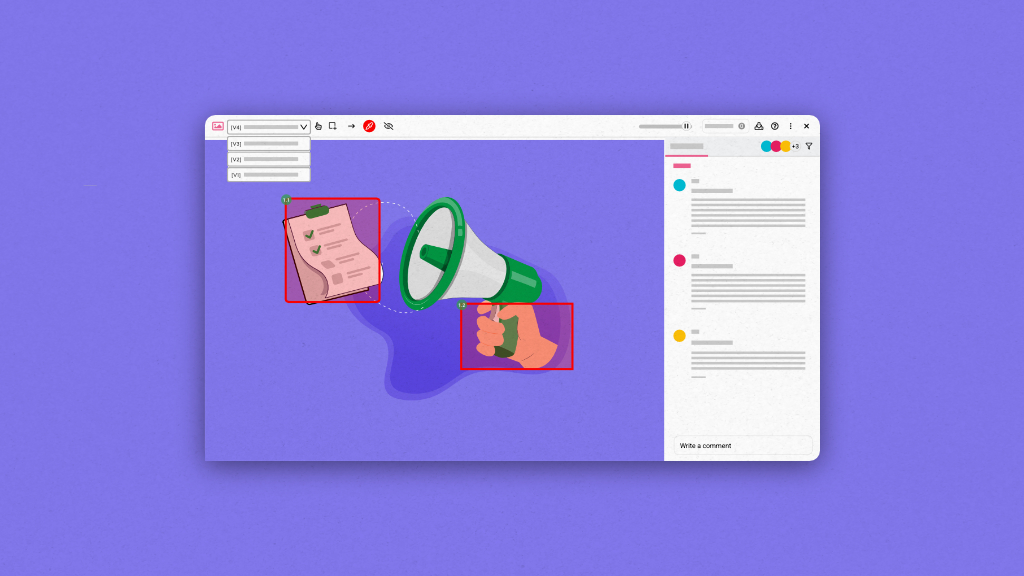Collaborating on design projects can be as chaotic as it is exciting.
Almost anyone who has worked on a design project have probably stumbled upon that one folder with files named:
“Final”
“Final_v2”
“This_one_has_to_ be_the_ final_Final_v27”
Sound familiar?
We’ve all been there, trying to keep track of every minor design tweak made along the way before finally landing on the “final” version.
Personally, I’ve lost count of the number of times I’ve said, “Hey, I’m using the master file—don’t open it right now!” or, “Okay, I’m done. No, wait! Now I’m really done!”
The small frustrations of tracking endless tweaks may seem harmless at first but they add up leading to wasted time, project delay, design inconsistencies, and, let’s be honest, some very unhappy employees.
Here is the thing: Designers like to work on ideas, not on file management. And when there is no clear system for design version control, the freedom to think and innovate goes away quickly and makes room for confusion and chaos instead.
That’s why understanding and implementing effective design version control is essential for creative workflows.
What is design version control?
Design version control is a system for managing and organizing design files through their various iterations and revisions. It helps track changes, avoid errors, and ensure that teams can collaborate efficiently without losing earlier versions of the design.
In creative fields like digital design, a single project often has dozens or even hundreds of file versions each reflecting tweaks, feedback or major revisions.
If you’re familiar with Git, a version control system used in software development, you will know how it prevents developers from overwriting each other’s work while managing non-linear development.
For non-technical users, tools like Google Docs or Sheets provide a more straightforward version history feature, allowing users to track changes and restore earlier versions when needed.
Design version control works similarly: it creates a structured way to keep track of all the changes made to a design file over time. This allows designers and teams to collaborate more effectively, knowing they can revisit earlier versions, compare them, and restore or integrate changes as necessary. It also helps avoid the risk of losing important design ideas or progress when multiple team members are involved in the process.
However, the whole process of versioning and managing design files is a little more nuanced than docs and git, and requires certain design collaboration tools. Let’s break it down one step after the other, starting with understanding design version control vs backup.
Design version control vs. backup
Design version control and backup both involve creating and storing the information produced in the design process. However, their purpose is quite different and often confuses many people.
One of the most easy and simple differences that I came across was described by one of our expert as follows:
Design version control: A version control system is designed to organize and manage multiple revisions of the same design or file. It enables you to track changes, access earlier versions, and work with various iterations of a project simultaneously. Think of it as a time machine for your design process, letting you manage non-linear progressions and collaborate efficiently.
Backup: A backup, on the other hand, is a safe repository where the most recent version of your file is stored. While older files may or may not be retained, the primary goal is to ensure that you can recover the latest version in case of loss or damage. Backups are more about data protection than iterative design management.
In other words, a backup maps out a linear progression of files, preserving the newest version. In contrast, design version control allows you to manage non-linear iterations, capturing multiple versions at various checkpoints for better organization and flexibility.

Key purposes of design version control
- Tracking changes over time: Design work often involves multiple iterations, whether you’re refining a wireframe, enhancing a prototype, or only polishing a design. With version control, each stage of the design is saved and accessible. This is important because sometimes you need to compare past iterations or revert to an earlier version without manually tracking changes.
- Organizing different versions for different purposes: Let’s say you’re working on a logo and need other versions for print, web, and social media use. Each of these versions might evolve over time as feedback is incorporated. A version control system helps organize all these different variations to ensure that there are no cluttered folders or lost versions..
- Collaboration across teams: Even though designers typically don’t face the same kind of code conflicts that developers do, collaboration can still get messy. Picture this: a designer, content strategist and marketer all working on the same design file. With multiple people working on the same design at different times there is a likelihood of chaos ensues. With version control systems prevent everyone from working smoothly with an access to clean, organized history of all iterations so that no one missed out on updates
- Backup and recovery: Accidents happen and design files are not an exception too. Files get corrupted, mistakenly deleted or overwritten. Version control offers a safety net so you don’t lose valuable work. Having historical snapshots of each version ensures that you can recover important design decisions and assets, without starting from scratch..
- Audit trail and documentation: All the design related decisions such as why did we change that button color, who made this adjustment and when? Version control answers all such questions. By keeping a detailed record of design decisions, version control provides insights into when and why changes occurred and this is invaluable for accountability and team alignment.
What are the types of design version control systems?
Using a version control system is a common practice in development projects. The final product that you use is a result of many iterations. Almost every little change made across the way ends up being a new version. Moreover, design processes are becoming more and more collaborative day by day. Factor in the feedback and inputs on each version, you end up with a digital version of your messy closet.
This calls for a structured format to manage the versions created during the process. There are mainly two types of version control systems:
1. Centralized version control system

A centralized version control system uses a single central repository to store all project files and their revision history. For instance, a shared folder on Google Drive where the entire team works. Everyone connects to the central location to download and upload files.
When someone makes changes, they download the file, edit it locally, and upload the updated version back to the central repository. While effective in tracking basic changes, this system relies heavily on the central server being available. If the server goes down, access to files and the project history may be lost.
This model works well when there are only a few collaborators, but it can be a bit manual and prone to mistakes, such as overwriting each other’s work. To avoid confusion, a clear file-naming system is crucial when using a centralized version control system. For instance, you might use a format like this:
2. Distributed version control system
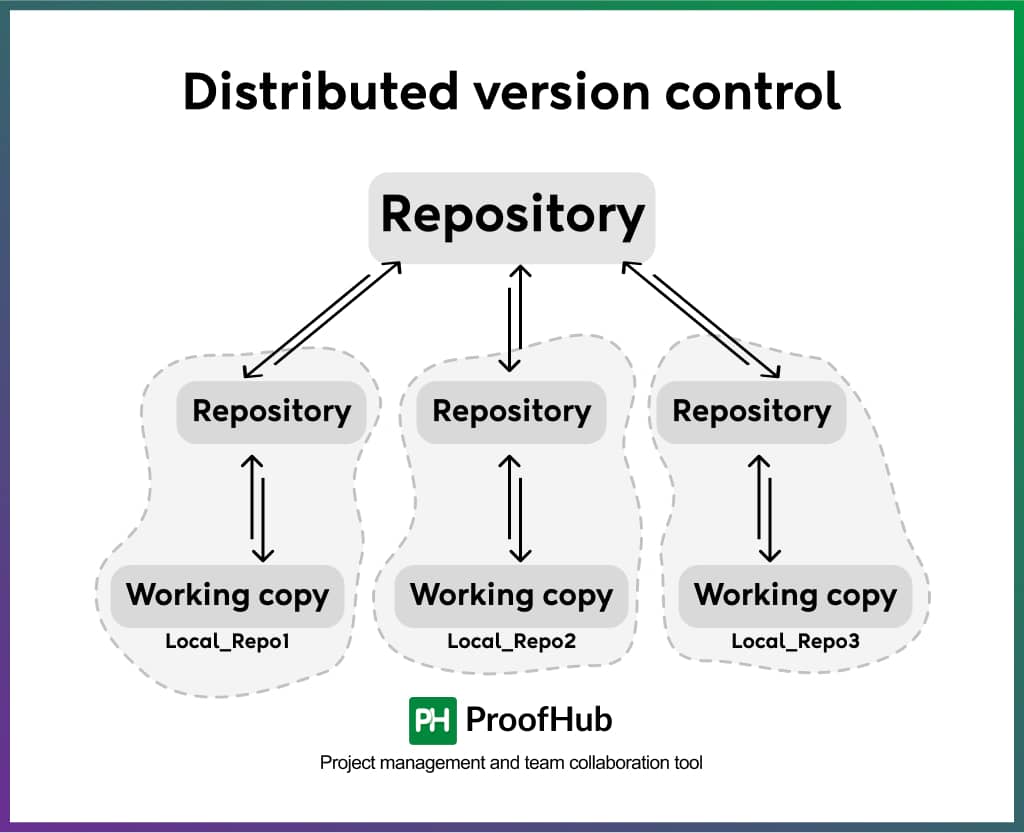
In contrast, a distributed version control system (DVCS) allows each user to have their own copy of the entire repository, including its whole history. This gives designers the freedom to work offline and experiment with different design variations without affecting the central version.
For instance, if you’re exploring multiple directions for a design, you can create branches of your work, test out ideas, and only merge changes when you’re ready. The key advantage here is that it provides flexibility and redundancy—if something goes wrong, each designer can work with their local copy until things are sorted out. While it’s a more robust solution for larger, complex teams, it may feel like overkill for small teams working on a single design file.
Common challenges in design version control
The primary challenge with version control is managing multiple copies of the same file. For someone like me, who loves (and appreciates a lot) the concept of A/B testing, the issue was more rigorous. I had to finalize two variations instead of just one. That meant double the drafts, double the confusion, and time spent searching for the right file.
Based on preferred workflows, there could be numerous challenges one might come across with design version control. However, they all boil down to the following five issues.
1. Controlling versions in a fluid design workflow
Modern design workflows are inherently non-linear. One moment, you’re deep in prototyping, and the next, you’re revisiting your research or tweaking an earlier concept based on new feedback. While this too-and-fro juggling is essential for creativity, it also makes staying organized a severe challenge.
With every stage—research, prototyping, iteration—you’re creating new versions of files. Add in multiple team members working on the same project at the same time, and it’s easy for things to spin out of control. You might end up accidentally overwriting someone’s work or losing track of the latest update.
This lack of version control can lead to duplicated effort, wasted time, and, let’s be honest, more stress than anyone signed up for.
2. Lack of a centralized repository
When design teams lack a centralized version control system, it’s common to see multiple versions of the same file floating around. Team members may be working with different versions, making it impossible to ensure everyone is on the same page. This “version chaos” can lead to confusion and errors, as files are duplicated, or worse, conflicting designs are implemented.
The lack of clarity on what’s the “real” version can result in wasted time spent searching for the latest file or redoing work that’s already been done. What’s more frustrating is that even after hours of collaboration, you still can’t be certain that the design you’re working on is the one that was last reviewed or approved.
3. Inefficiencies in the review and approval process
If you have ever felt like the design review process eats up more time than it should, you’re not alone. For most teams, this process relies heavily on meetings or scattered tools like emails and chat platforms. While these methods may get the job done, they come with significant challenges that slow things down and frustrate everyone involved.
Meetings, for instance, are essential for collaboration and innovation, but they’re not always the most efficient way to move work forward. In fact, a recent poll we conducted on LinkedIn revealed that 40% of professionals, including team leaders, consider stand-ups to be the most effective method for collaboration while working remotely. This preference highlights the need for structured, focused communication rather than the time-draining nature of prolonged or frequent meetings.
The reliance on scattered design feedback tools compounds the inefficiencies. Feedback often comes from multiple channels—emails, Slack messages, and even quick verbal updates during calls. Who said what? Did you already update that? Are you working with the latest version of the design?
The back-and-forth nature of reviews without a clear system feels like running in circles. Instead of focusing on refining designs, you’re stuck chasing updates, trying to make sense of feedback, or worse—redoing work because of missed details.
4. Scalability challenge
As design teams grow, the complexity of managing versions grows exponentially. Without a standardized version control system, collaboration becomes cumbersome, and consistency suffers.
New team members may struggle to find the right files or understand the version history, leading to confusion or mistakes. What worked for a smaller team no longer scales as the number of collaborators increases. As new designs are created and more stakeholders are involved, the chances of conflicting versions or missed updates only rise.
A lack of structure becomes a bottleneck that suppresses the team’s ability to move quickly and efficiently, ultimately delaying project timelines and impacting quality. What’s worse, these issues can pile up over time, making it even harder to recover when things go wrong.
5. Unclear accountability
Without a clear history of changes, tracking accountability becomes a nightmare. Who approved that last change? Did the feedback actually get incorporated? Without a proper versioning system, designers can’t easily pinpoint the source of a change, which can lead to confusion, miscommunication, and delays.
The lack of clarity can also affect team morale, as team members may feel frustrated when there’s no way to confirm whether their work has been reviewed or if it’s aligned with the project’s goals. Unclear accountability makes it difficult to resolve issues efficiently and undermines the sense of ownership in the project.
Creativity thrives on freedom, but it also needs structure to avoid becoming chaos. A design version control system is essential for maintaining this creative ebb and flow. It makes sure every version is documented and accessible, offering designers the freedom to experiment while maintaining a reliable structure.
ProofHub keeps your team organized and eliminates the confusion of managing endless file variations.
Benefits of using version control in designing projects
Designing is rarely a one-and-done process. Whether you’re working on a sleek new UI or iterating on a marketing campaign, you’re likely producing dozens—if not hundreds—of versions before the final result. This is where a design version control system steps in as a game-changer, bringing structure and clarity to what can otherwise feel like an overwhelming process.
Here’s why design teams of all sizes should consider incorporating one into their workflow:
1. Stay organized
If you’ve never used a version control tool, you’ve probably experienced the chaos of managing countless design iterations, presentations, and feedback threads. The worst offender? Maintaining an endless changelog in your design file. A design version control system brings structure to this chaos, allowing you to keep all iterations, folders, and feedback in order—so you can focus on designing, not file management.
2. Collaborate seamlessly
Design projects thrive on collaboration, but miscommunication can derail progress. With version control, developers, stakeholders, and marketers are always working from the same source of truth. At ProofHub, we rely on our own project management and team collaboration platform for collaboration. Our design and development teams share ideas, give feedback, and review or approve different versions of files—all in one place. This keeps everyone in the loop and eliminates the chaos of endless “final-final_v2” file versions or untraceable email threads. The result? A workflow that’s more efficient and less frustrating for everyone involved.
3. Promote transparency and accountability
Oversight is a critical threat in design projects, especially in iterative development. Version control provides clarity by logging every change, detailing who made it and when. This transparency not only ensures accountability but also protects the team from compliance issues or unexpected changes that could lead to disaster.
For example, ProofHub includes activity logs as part of its toolkit, providing a clear record of actions taken within the platform. Whether it’s tracking who updated a design file or monitoring feedback loops, tools like these make it easier for teams to stay aligned and maintain accountability throughout the project.
4. Prevent errors before they happen
When files are passed back and forth for review or experimentation, it’s easy for mistakes to creep in—missing updates, duplicate files, or incorrect changes. A design version control system eliminates this risk by managing changes systematically, so you always know what’s been updated and what hasn’t. No more “spot the difference” headaches between versions.
5. A centralized hub for everything
Creative work demands focus and flow. When designers are bogged down organizing files or searching for the correct version, their productivity takes a hit. A version control system creates a centralized repository for every version, iteration, and piece of feedback, ensuring everything is accessible in one place. This means designers can stay in their creative zone while the system handles the admin.
6. Boost productivity and save time
Time spent hunting down files or resolving version conflicts is time wasted. By streamlining the versioning process, a design version control system reduces inefficiencies and helps teams work smarter, not harder. Faster file management, fewer errors, and improved communication mean you can deliver projects on time and with less stress.
7. Produce higher-quality outputs
Consistency is key to delivering exceptional design. With a version control system, you can track even the smallest changes and ensure they align with the project’s goals. This attention to detail improves design quality, ensures every stakeholder’s input is accounted for, and results in polished outputs that meet—or exceed—expectations.
8. Adapt and scale with ease
As teams grow and projects become more complex, version control becomes essential. A robust system provides the scalability needed to manage larger teams and more intricate workflows without sacrificing efficiency or clarity. It allows teams to establish repeatable processes that ensure consistency, no matter the project size.
Popular tools for design version control
Here is the list of tools that can help you establish a design version control system based on your workflows
1. ProofHub
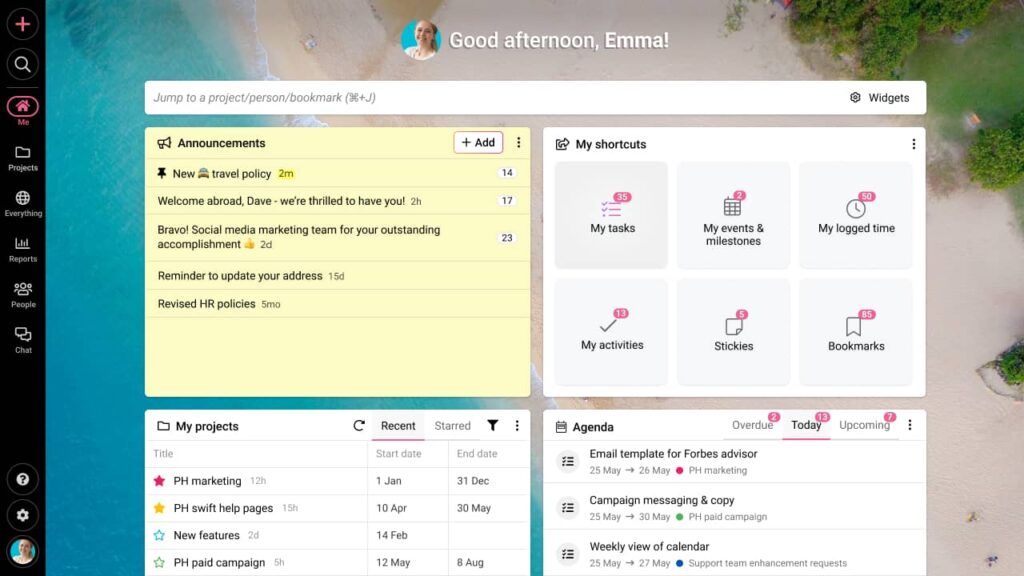
ProofHub is primarily a project management and team collaboration software, with file versioning and proofing as one of its core functionalities. While your team relies on Git for code and Figma for creating the design, ProofHub provides a centralized hub to organize and manage all file versions, feedback, and communication in one place.
This means that team members can easily access previous iterations of designs without sifting through endless email threads or disparate folders. The ability to compare different versions and easily collaborate on them ensures that your team can maintain clarity and avoid confusion during the design process. Moreover, it brings every stakeholder, discussion, and piece of feedback into one centralized platform.
Key features
- File versioning: Access past iterations instantly and avoid confusion about which version is current. This simplifies collaboration and reduces errors.
- Proofing tools: Add comments and annotations directly on designs for clearer feedback and faster iterations.
- Approval tracking: Keep a clear record of which versions have been approved and by whom.
- Centralized collaboration: Combine discussions, feedback, and approvals in one place, improving alignment between designers and other stakeholders.
- Task and workflow management: Track progress and organize secondary activities like meetings or document sharing alongside design files.
- Customizable workspaces: Tailor the platform to your team’s needs, ensuring a seamless fit into existing workflows.
ProofHub stands out as an all-in-one solution, not just for version control but for incorporating every aspect of design collaboration—from feedback to final approval. It eliminates the need for juggling multiple tools and brings together all stakeholders and teams to one single platform.
2. Snowtrack

Snowtrack caters specifically to the creative workflows of artists and designers, providing a straightforward, artist-friendly solution for managing design versions. It offers an intuitive platform with the basics of version control, making it a great option for smaller teams or startups looking for simplicity without sacrificing functionality.
Key features
- Intuitive user interface: Designed for creatives, Snowtrack removes the complexity often associated with version control tools.
- Version history: Automatically tracks changes, enabling you to roll back to earlier iterations effortlessly.
- Collaboration tools: Share versions and collaborate with team members using push and pull capabilities.
- Lightweight design: Requires minimal setup, making it ideal for teams without extensive IT support.
Snowtrack’s simplicity makes it an excellent entry point for teams that need basic version control without overwhelming features.
3. Kactus

Kactus brings the power of Git to designers in a way that feels approachable and easy to use. Its design-first focus ensures seamless integration with creative workflows while retaining the familiarity of Git’s version control system. Open-source and highly customizable, Kactus offers flexibility to teams looking to simplify complex design versioning processes.
Key features
- Git integration for designers: Brings the reliability of Git into a design-friendly interface.
- Customizable options: Tailor the tool to match your workflow, providing flexibility for unique team needs.
- Project organization: Organizes design files and their versions logically, reducing confusion and improving traceability.
- Collaboration features: Easily share updates and manage contributions within teams.
- Open-source Support: Access a wealth of resources and enhancements driven by the community.
Kactus uniquely balances Git’s advanced capabilities with a designer-friendly interface, bridging the gap between developers and designers effectively.
4. Git

Git needs no introduction. Virtually every software development project starts with the creation of a git repository. While originally designed for developers, Git has become a cornerstone for managing versions across many disciplines, including design. It offers version control capabilities but requires technical knowledge, making it best suited for teams with mixed designer-developer workflows or those already familiar with Git.
Key features
- Powerful versioning system: Tracks every change and enables rollback to any previous state with precision.
- Branching and merging: Ideal for experimenting with design variations while maintaining a stable master file.
- Cross-team integration: Allows developers and designers to collaborate within the same ecosystem.
- Decentralized control: Ensures files and updates are always accessible, even offline.
- Compatibility with tools like Figma: Enhances workflows for tech-savvy teams by integrating with design platforms.
Git’s unparalleled versioning power and branching capabilities make it a perfect fit for teams where designers and developers collaborate closely.
5. Filestage

Filestage is good at simplifying the feedback and approval process while incorporating basic version control features. It centralizes feedback and streamlines review cycles, making it easier to manage design iterations without confusion.
Key features
- Centralized feedback: Collect input from multiple stakeholders in one place, avoiding scattered communication channels.
- Side-by-side comparisons: Review changes across different design versions with ease.
- Collaborative annotations: Enable stakeholders to leave detailed comments on specific areas of the design.
- File organization: Automatically manages design files and iterations, ensuring they’re easy to locate.
Filestage shines as a tool for feedback-heavy workflows, helping teams streamline the approval process while maintaining a clear version history.
6. Adobe creative cloud

For teams already using Adobe tools like Photoshop and Illustrator, the built-in version control capabilities within Adobe Creative Cloud offer a seamless way to manage design iterations. These tools integrate tightly with existing Adobe workflows, providing convenience and efficiency.
Key features
- Automatic versioning: Adobe saves and organizes multiple versions of your design files as you work.
- Creative cloud libraries: Store and share assets across teams, ensuring consistency.
- Collaboration tools: Share files and gather feedback directly within Adobe apps.
- Cloud-based access: Access design files anytime, anywhere, without needing local storage.
- Integration with other Adobe tools: Enhance productivity by connecting design workflows with tools like Adobe XD and Premiere Pro.
For teams deeply invested in Adobe’s ecosystem, the native integration of version control features offers unmatched convenience without the need for additional tools.
Best practices for using design version control
Managing design files effectively requires more than just a tool—it demands a structured approach that keeps your team organized and your work protected. Here are some essential practices to help you get the most out of designing version control systems:
- Establish clear naming conventions: A straightforward naming system reduces confusion and ensures that all team members can easily find the most up-to-date version of a file. Consistent naming conventions:
- Make it easy to identify files by project and purpose.
- Help streamline file searches during reviews or audits.
- Minimize misunderstandings when handing files between teams.
For example, use a format like ProjectName_DesignAspect_VersionNumber to keep things tidy and understandable at a glance.
- Create dedicated branches for experimentation: Separating experimental ideas from the main project file ensures that creative freedom doesn’t come at the cost of stability. Branching allows your team to try out new concepts, test feedback, or refine specific components without impacting the primary design.
- Centralize feedback and version storage: Keeping all design iterations and stakeholder feedback in one place is crucial for maintaining clarity. A centralized system eliminates confusion about where to find past versions or track feedback, ensuring every team member stays aligned.
Adopting these best practices ensures your design process is organized, collaborative, and adaptable to change, helping you deliver polished projects without the stress of mismanagement.
Common mistakes to avoid in design version control
Even the best design teams can fall into traps that undermine the efficiency of version control systems. Avoiding these common mistakes will save time and effort while improving project outcomes:
- Ignoring initial setup: Skipping the groundwork of setting up structured folders and consistent naming conventions can lead to chaos later. Invest time at the start of the project to create an organized system that your team will follow throughout.
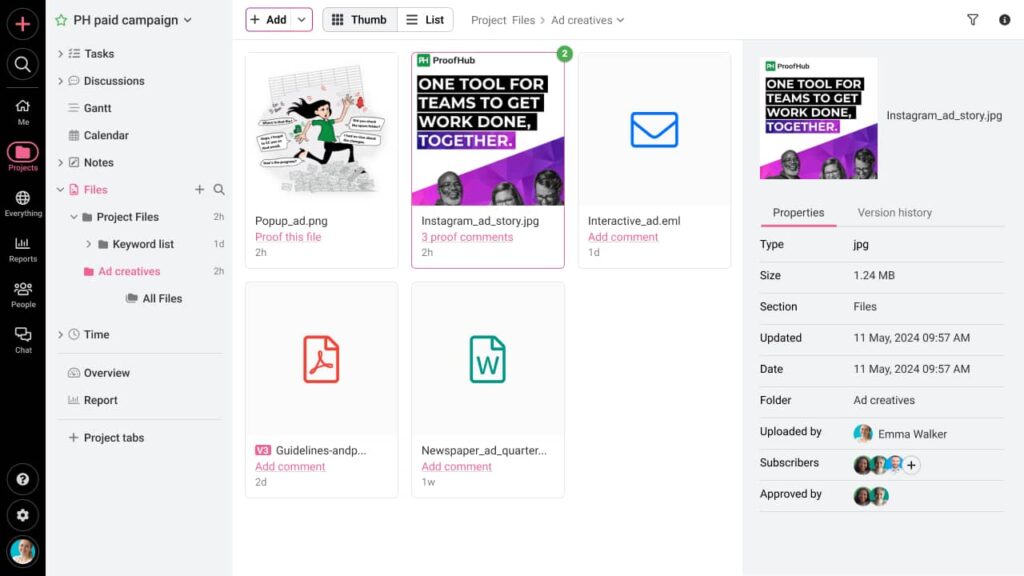
Pro tip: Use ProofHub’s file management feature to create dedicated folders for different design assets. Label them by project stage or team responsibility for easy navigation. Add instructions in shared notes for naming conventions.
- Overcomplicating workflows: An overly complex version control process can confuse team members and lead to low adoption rates. Simplicity is key—create workflows that are intuitive, scalable, and easy to maintain.

Pro tip: Map out a step-by-step workflow in ProofHub’s task section, outlining responsibilities for uploading, reviewing, and approving designs. Assign tasks with deadlines to ensure accountability.
- Not reviewing changes regularly: Allowing unresolved edits to pile up can delay progress and cause unnecessary revisions. Set aside time to review periodic versions, assess feedback, and ensure designs align with project goals.
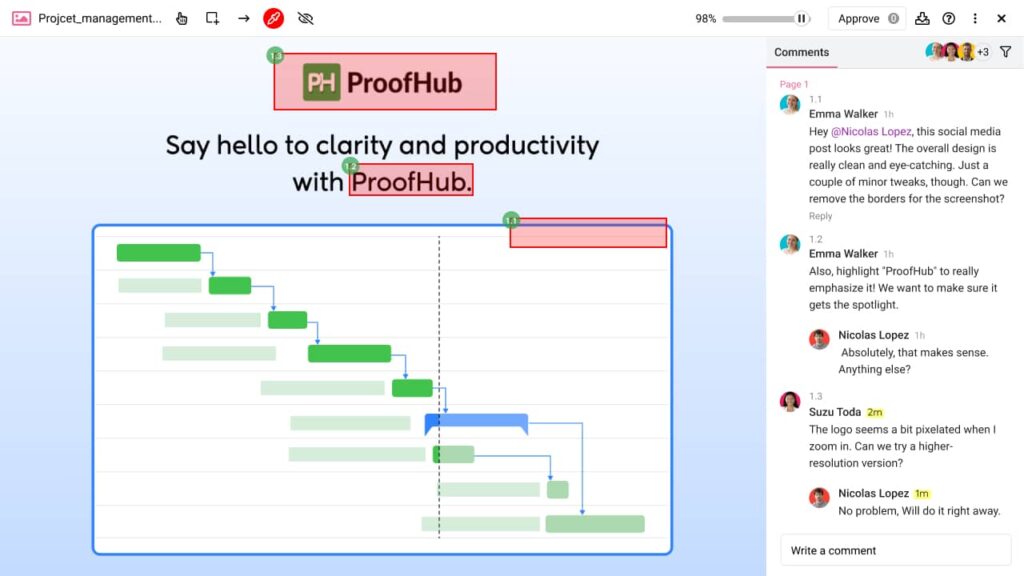
Pro tip: Use ProofHub’s proofing tool to streamline your review process by annotating files and resolving feedback directly on design assets. To stay consistent, schedule recurring review meetings using ProofHub’s calendar feature, ensuring updates are addressed promptly, and no input is overlooked.
- Failing to consolidate feedback: Scattered feedback—across email, chat, and meetings—slows down decision-making and increases the risk of miscommunication. Consolidating input into a single platform is vital to avoid oversights.

Pro tip: Centralize feedback with ProofHub, where team members can annotate directly on the asset and share their feedback in the comments.
- Forgetting to label experimental designs: When experimenting with new ideas, failing to label these branches properly can lead to confusion. Clearly mark experimental versions and separate them from finalized work to maintain clarity.

Pro tip: Use ProofHub’s version history to track file iterations and ensure experimental files are properly labelled. Restore older versions or mark specific ones as “current” to maintain clarity.
- Letting feedback overlap: When multiple stakeholders provide feedback simultaneously without a process to consolidate it, teams can struggle to manage conflicting suggestions. Use structured review sessions or centralized platforms to collect, organize, and prioritize feedback.

Pro tip: Organize feedback rounds in ProofHub by using the “resolve” or “reopen” options in comments. This makes it easier to consolidate and prioritize stakeholder input during review sessions.
- Missing the bigger picture in version reviews: It’s easy to get caught up in minor changes and lose sight of broader project objectives. Regularly step back to evaluate whether updates align with the design’s purpose and goals.

Pro tip: Regularly step back to align designs with project milestones. Use ProofHub’s project overview or discussions to review progress and ensure the team remains focused on end goals.
- Neglecting cross-team collaboration: Designers and developers often operate in silos, leading to workflow bottlenecks and misaligned outputs. Encourage cross-team communication and leverage tools that facilitate real-time updates to keep everyone on the same page.

Pro tip: Use ProofHub’s discussion threads and @mentions to facilitate real-time communication between teams. Task assignments and timelines can also help keep everyone in sync.
Conclusion
Great design isn’t just about individual talent; it’s built through teamwork, communication, and flexibility. When you add version control to your design process, you create a space where creativity can flourish within an organized system. Instead of searching for the “right file,” you focus on improving the “right ideas.”
Version control keeps your team aligned, makes collaboration smoother, and helps maintain clarity throughout the design process. It allows you to share updates with stakeholders, track changes, and ensure every iteration moves you closer to the final product.
FAQs
What is the most used version control system?
Git is the most widely used version control system, especially in software development. Its flexibility, distributed nature, and integration with popular platforms like GitHub and GitLab make it a top choice. While Git is primarily code-focused, its principles can be adapted for design workflows to track file changes and enable collaboration.
What is the difference between centralized and distributed version control for design projects?
Centralized version control systems (e.g., Subversion) store all versions in a single central repository, requiring a constant connection to access or commit changes. Distributed systems (e.g., Git) allow users to have a complete local copy of the repository, offering more flexibility to work offline and manage changes independently before syncing with others. For design projects, distributed systems are more adaptable for teams working asynchronously or remotely.
How can version control improve the design review process?
Version control enhances the design review process by providing:
- Clear history: A detailed log of all changes, making it easier to track progress and revisit earlier iterations.
- Transparency: Stakeholders can access the latest versions and see how the design evolved.
- Reduced errors: By preventing overwrites and accidental loss of work, version control ensures accuracy.
- Efficient feedback loops: Team members can annotate, comment, and collaborate on specific versions without confusion.
These benefits not only streamline reviews but also ensure the final design aligns with the team’s vision and goals.
